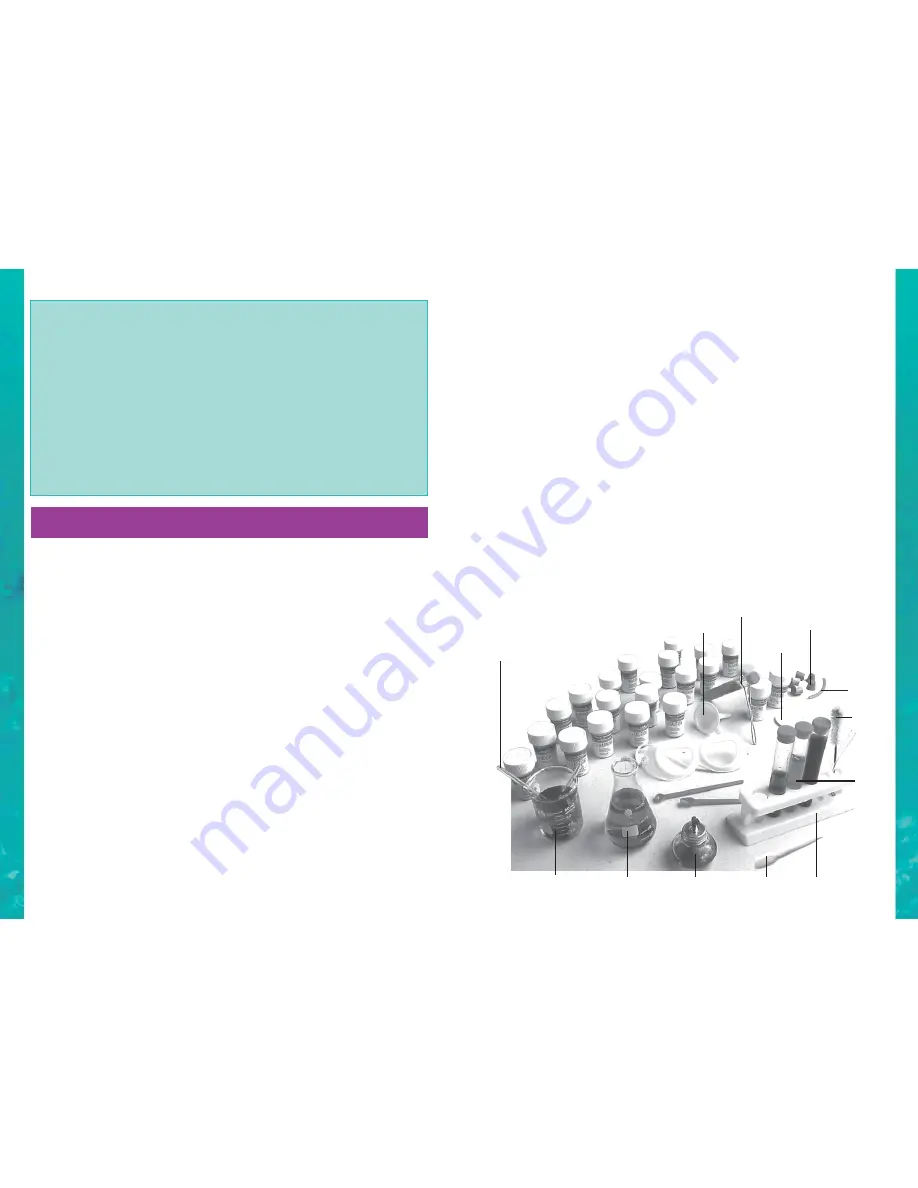
This Chemistry Lab Instruction Booklet has
been written by David Webster. Dr. Webster
is a Fellow of the Royal Society of
Chemistry and a Chartered Chemist. He
has been teaching practical chemistry for
over 40 years, and is the author of a
chemistry textbook for younger secondary
school children. He has designed and
tested the 100 experiments in this
instruction booklet. The experiments,
which get more difficult and involve more
complex ideas as you move through the
You are now the owner of a Chemistry Laboratory. We hope that you enjoy
the many interesting chemistry experiments which are given in this
Instruction Booklet.
ADULT SUPERVISION IS NECESSARY AT ALL TIMES.
A Chemistry Laboratory, such as this, is not for ‘playing’ with. When carrying out chemistry
experiments you need to take GREAT CARE in both following the instructions and in keeping
a Laboratory Notebook of your experiments and results.
If you do this you will be working safely and learning some chemistry at the same time.
Working safely must always be your main concern. The experiments given here are safe and
enjoyable and at the same time you will learn about chemistry.
Always be careful to avoid getting chemicals on you, particularly not in your eyes or mouth.
Also be careful not to burn yourself. To avoid injury read and follow all the safety rules
which follow.
Introduction
6
7
booklet, are a collection of safe chemical
experiments for you to carry out using both
the chemicals and equipment in the
Chemistry Lab and common chemicals and
other readily available materials, many of
which you will already have at home. The
experiments are intended to show you some
of the magic and mystery of chemistry, and
the relevance of chemistry to your
understanding of what is to be found in your
home and in the world around you.
Chemistry is a very important science,
because everything in the Universe is made of
chemical substances. You, the water you drink,
the air your breathe, the food you eat, the hills
you climb, are all chemical substances.
All chemical substances are made from about
100 elements. You, for example, are a very
complicated mixture of chemicals, but 98% of
you is just 6 of these 100 elements (hydrogen,
carbon, nitrogen, oxygen, phosphorus and
sulphur). Many other elements make up the
remaining 2% of you, such as iron, in your
blood, and sodium, in the cells of your body.
When you carry out chemical experiments you
are studying how the many different chemical
substances behave. This Chemistry Lab
contains the equipment and chemicals to carry
out many interesting experiments, but no
chemistry set can be “complete” as there are
millions of possible chemistry experiments.
You must regard your Chemistry Lab as the
heart of a laboratory to which you can add
other equipment and chemicals (only those
suggested on pages 14/15 in this manual
or listed in each experiment in this manual).
Then you can carry out other experiments.
Some of the experiments here require other
equipment and chemicals and these are
described in the section Additional Equipment
and Chemicals. DO NOT use anything not
listed as a requirement in this manual.
It is a good idea to get together as much
of this equipment and as many of these
chemicals before your start. Certainly get
them before you start the experiment which
needs them. These additional chemicals and
equipment need not be expensive. Part of the
fun of using a chemistry set at home is to
improvise, that is to make the equipment
from common household items, and use
common household chemicals, as much
as possible.
Glass
stirring rod
100mm beaker 100mm conical
flask
Spirit burner
Dropping
pipette
test tube
rack
Plastic funnel
Test tube holder
Filter papers
Corks
Rubber
tubing
Test
tubes
Test tube
cleaning
brush





































